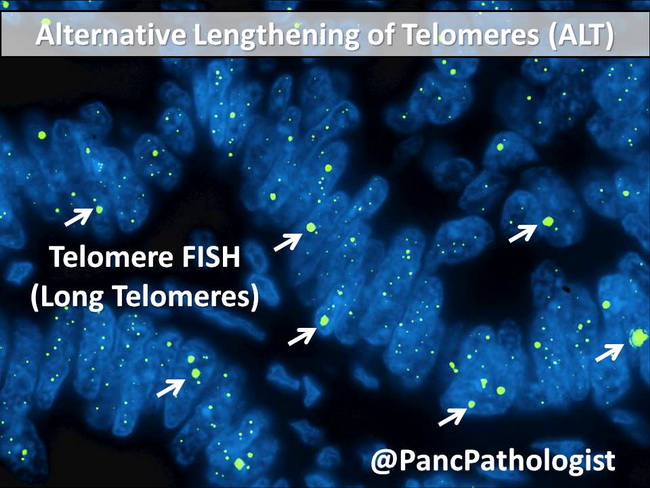PanNET : Molecular Genetics


Comments:
Molecular Genetics of Pancreatic Neuroendocrine Tumors (PanNETs) - continued from the previous image. mTOR Pathway: About 15% of PanNETs have mutations in genes of mTOR pathway such as TSC2 and PTEN. Reduced expression of TSC-2 (tuberous sclerosis-2), an inhibitor of the mTOR/AKT pathway correlates with poor survival. Drugs like everolimus (mTOR inhibitor) and sunitinib (tyrosine kinase receptor inhibitor) have improved outcomes in patients with advanced, malignant PanNETs. A single nucleotide polymorphism in codon 388 of fibroblastic growth factor receptor (normally seen in 40% to 50% of Caucasians) reduces the sensitivity of PanNET to everolimus and is associated with advanced stage and liver metastases. Other mutations: Some cases of PanNETs show mutations in vHL or HIF1A genes. Germline mutations (and associated clinical syndromes) detected in PanNETs are as follows: MEN1 (multiple endocrine neoplasia type 1), vHL (von Hippel Lindau disease), NF1 (Neurofibromatosis type 1), GCGR (glucagon cell hyperplasia and neoplasia), and MAFA (familial insulinomatosis). Chromosomal gains/losses in PanNETs: Chromosomal gains and losses are common in PanNETs. Allelic losses are frequent at chromosomal loci 1p, 1q, 3p, 11p, 11q, and 22q. Gains occur at 7q, 17q and 4q. About this image: Studies have shown that about 43% of PanNETs harbor mutually exclusive mutations in either DAXX or ATRX genes. The protein products of these genes regulate chromatin remodeling at telomeric and pericentromeric regions. Mutations in DAXX or ATRX cause loss of nuclear expression of their protein products (which can be assessed immunohistochemically; see previous image) and correlate with alternative lengthening of telomeres (ALT) - a telomerase-independent telomere maintenance mechanism. ALT can be assessed by telomere-specific FISH which is shown in this image. The loss of DAXX or ATRX correlates with the presence of large ultrabright intranuclear signals, consistent with ALT. Image courtesy of: Dr. Aatur Singhi (@PancPathologist); used with permission.



